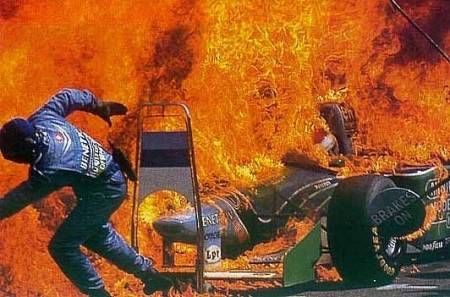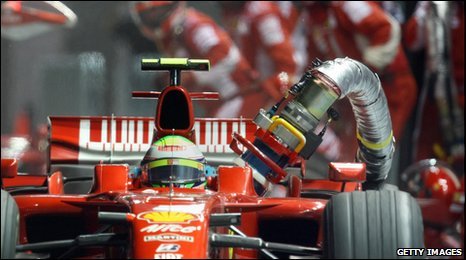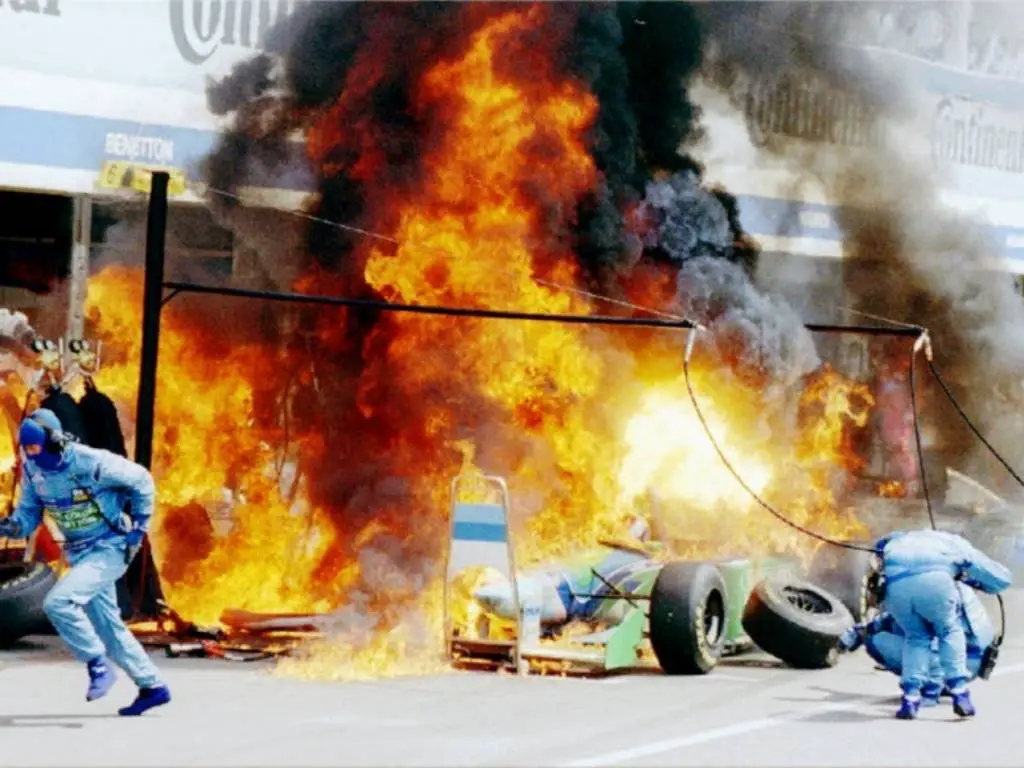The world of Formula 1 racing has undergone significant changes over the years. From the cars themselves to the regulations and rules that govern the sport. One area that has seen a significant transformation is refueling. It has gone from being a risky and dangerous practice to a safety priority.
In the early days of F1, refueling was a common occurrence during races. Teams used high-pressure hoses and volatile fuels to top up their cars in a matter of seconds. However, as the speeds and risks increased, so did the danger of refueling, leading to several accidents and injuries.
Today, F1 rules do not allow mi race refueling. Join me as we explore the evolution of F1 refueling. We’ll look at the dangers it posed in the past, and the reasons it was cancelled in modern racing.
The Early Days Of F1 Refueling – The Danger Zone
Refueling in F1 has a long and controversial history. The first F1 race in 1950 had no restrictions on fuel capacity or refueling. Teams could choose how much fuel to carry and when to stop for more.
This also meant that there were no safety standards for refueling equipment or procedures, which led to some dangerous incidents.

The 1994 Imola Grand Prix Disaster
One of the most iconic images of F1 history is the pit stop fire of Jos Verstappen at the 1994 German Grand Prix.
The Benetton driver came in for a routine refueling stop. A faulty valve caused fuel to spray out of the hose and ignite on the hot car. Verstappen escaped with minor burns, but one of his mechanics suffered severe injuries.
The incident prompted the FIA to introduce stricter regulations for refueling equipment and fire protection.
However, refueling remained a part of F1 until 2010, when it was banned for cost and safety reasons. The FIA argued that refueling added unnecessary expense and complexity to the sport, and also increased the risk of accidents and injuries.
Do F1 Cars Refuel -The Current Situation of Refueling in F1

Since 2010, F1 cars have not refueled during a race. Instead, they start with a full tank of fuel, which has a maximum capacity of 110 kg (242 lbs.).
The drivers must manage their fuel consumption throughout the race, as running out of fuel before the finish line results in disqualification.
The ban on refueling has had several effects on F1 racing. On one hand, it has simplified the strategies and reduced the number of pit stops, as teams only need to change tires.
On the other hand, it has increased the importance of fuel efficiency and conservation, as drivers have to balance their speed and performance with their fuel usage.
The ban on refueling has also affected the design and weight of the cars. Without refueling, the cars have to carry more fuel at the start of the race, which makes them heavier and slower.
To compensate for this, the FIA has reduced the minimum weight limit of the cars over the years. It has moved from 620 kg (1367 lbs.) in 2010 to 798 kg (1,759 lbs.) in 2023.
Future Of F1 refueling – Will It Stay Or Go?

Refueling in F1 is a topic that often sparks debate among fans and experts. Some argue that refueling should be reintroduced to make the races more exciting and unpredictable. Tghis would enable teams to vary their strategies and pit stops.
Others contend that refueling should remain banned. Its important to keep the sport safe and sustainable, as refueling adds more costs and emissions.
The FIA has not shown any intention of bringing back refueling in F1 anytime soon. However, it has announced some changes for the future that could affect the fuel situation in F1.
For example, from 2022 onwards, F1 will introduce new technical regulations that will allow the use of ground effect within the cars. This could reduce the drag and increase the downforce of the cars, which could improve their speed and efficiency.
Another change that could impact the fuel management in F1 is the introduction of sustainable fuels from 2025 onwards. The FIA has committed to using 100% sustainable fuels in F1 by 2030, as part of its efforts to reduce its environmental impact and promote green technologies. These fuels are expected to be made from bio-waste or synthetic sources, and have lower carbon emissions than conventional fuels.
Do F1 Cars Refuel – Conclusion
Refueling in F1 is a complex and controversial issue that has shaped the history and evolution of the sport. While refueling was once a common practice in F1, it was banned in 2010 for cost and safety reasons. Since then, F1 cars have not refueled during a race, but have started with a full tank of fuel that they have to manage throughout the race.
The ban on refueling has had both positive and negative effects on F1 racing. It has simplified the strategies and reduced the risks, but it has also taken some of the excitement away.

